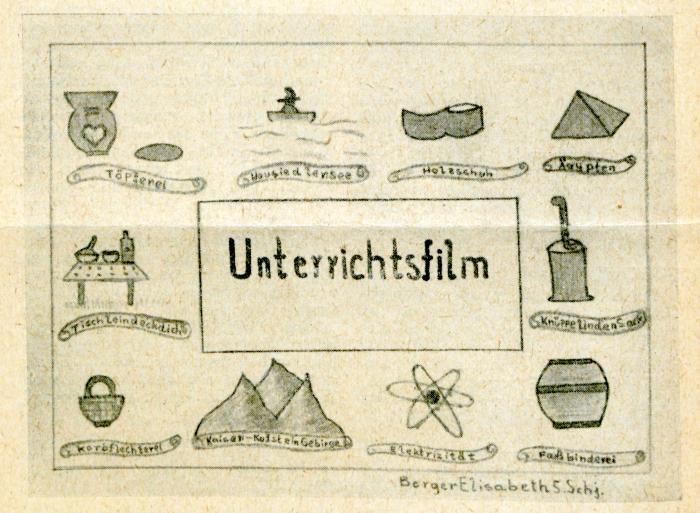About the project
The moving image has challenged and modified established notions and procedures of education until this day. Especially after the end of the First World War, film was used in a variety of educational and didactic settings. The project "Educational film practices in Austria" (FWF, P32343) has investigated this history of the use of film in educational and instructional contexts in Austria between 1918 and the late 1960s. The examined uses range from classroom projections and screenings for popular education to academic teaching, occupational training and consultation.
The subject of our research was educational film as a practice. This understanding of practices includes not only the films being projected, but also the institutions that commissioned and distributed them, the legal provisions enacted to regulate use of films in educational contexts, and the venues and set-ups of screenings. Educational films were shown in classrooms and commercial cinemas, in lecture halls or company meeting rooms. The screening situation could include a live lecture and assignments for the audience; for better understanding, a pointer could point out parts of the picture, the film could be supplemented with slides or prepared and followed up by accompanying projects. We use the term dispositif to describe how these different elements interacted with each other and with the intended goals of a performance and collaboratively produced its meaning. According to our central thesis, the practices of educational film take on concrete forms in the linkage between institutional policies, screening situations and the forms, styles and content of the films shown. This attention to practice had implications for our empirical research: We combined films with their supporting materials, including instruction booklets and lecture notes, which have traditionally been kept elsewhere. Our interpretation of the data also acknowledges that a film's meaning depends heavily on the context of its screening.
This website provides access to a key research result of the project: the Database and Media Collection combines our collected information on the films viewed in the project and relevant organisations, people, legislation and screening locations (in many cases accompanied by a brief historical summary). In addition, digital copies of some essential sources (films, photo series, texts) are available in the database – many of them in the context of case studies in which we highlight the spectrum of uses of film in educational contexts in Austria and offer insights into our research results.
You can read about many of these case studies in our other publications. As part of the project, we discussed our findings not only with specialist colleagues, but also with schoolchildren and middle school teachers. Since the moving image continues to challenge our notions of instruction and education – for example in the form of instructional and explainer videos on the Internet – we are convinced that our results are also instructive for an understanding of current media environments.
(Joachim Schätz)

Drawing of a schoolgirl in a letter to the head of a district film office (SHB-Film-Post, no. 46/1954, 12)